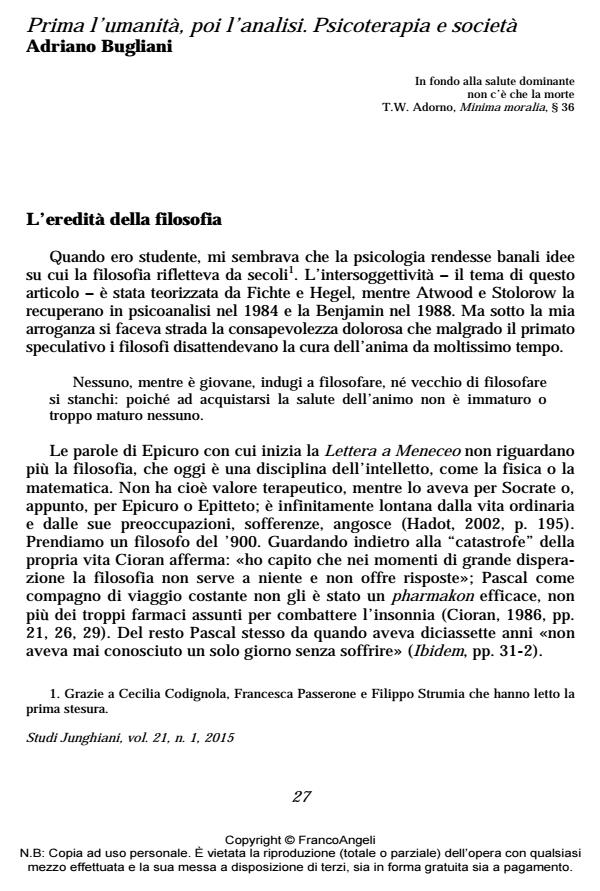Before humanity, then analysis. Psychotherapy and society
Journal title STUDI JUNGHIANI
Author/s Adriano Bugliani
Publishing Year 2015 Issue 2015/41
Language Italian Pages 20 P. 27-46 File size 172 KB
DOI 10.3280/JUN2015-041004
DOI is like a bar code for intellectual property: to have more infomation
click here
Below, you can see the article first page
If you want to buy this article in PDF format, you can do it, following the instructions to buy download credits

FrancoAngeli is member of Publishers International Linking Association, Inc (PILA), a not-for-profit association which run the CrossRef service enabling links to and from online scholarly content.
The article belongs to the century-old debate: psychoanalysis vs. psychotherapy, and claims that it is possible and even necessary for analysis to work in depth and surface at the same time. That is, to work joining analysis and psychotherapy, instead of conceiving them as antithetic and separated.
Keywords: Intersubjectivity, psychotherapy, self-disclosure, deep analysis, social adaptation, philosophy
Adriano Bugliani, Prima l’umanità, poi l’analisi. Psicoterapia e società in "STUDI JUNGHIANI" 41/2015, pp 27-46, DOI: 10.3280/JUN2015-041004